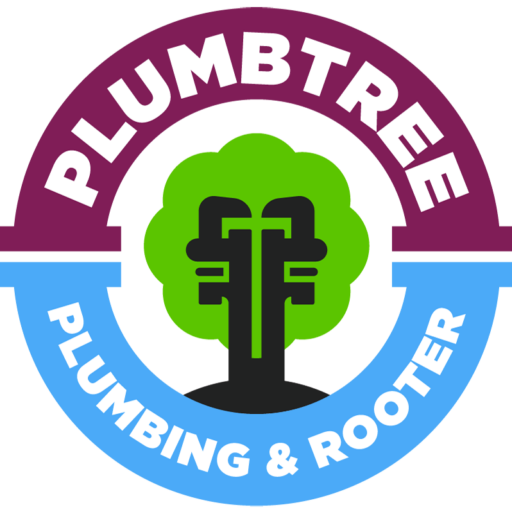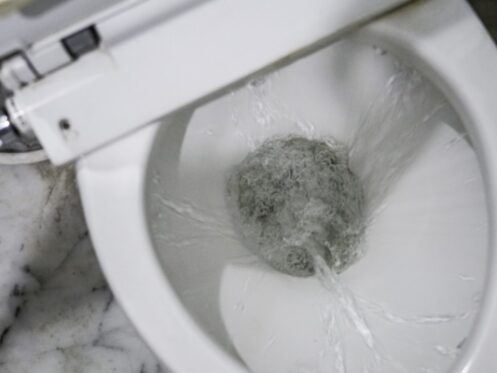Two things most people in the world want to do are help save the environment and save money. However, many people mistakenly believe that it’s difficult to do both at the same time. Creating an eco-friendly home sounds expensive, especially when it comes to plumbing fixtures, but this isn’t the case. In fact, there are many ways that you can easily have more eco-friendly plumbing while also saving a ton of money.
Fix Any Leaks Immediately
A tiny leak is nothing more than a minor inconvenience for many people. As long as it’s not causing damage, fixing a leak isn’t considered a major concern. However, even the smallest leaks may waste thousands of gallons of water yearly. Even temporarily putting a patch job on the leak until you get it professionally fixed will save water and significantly lower your water bill.
Be Mindful of What You Flush
Toilets are designed to process only water, human waste, and toilet paper. Flushing anything else may damage the environment and cost you money. Flushing harmful chemicals is one of the worst things you can do in your toilet. The chemicals could seep into the soil and water, harming nearby plants and wildlife, and the chemicals may also severely damage your septic tank.
Many chemicals kill necessary bacteria that help break down waste in your septic tank. Without those bacteria, your septic tank will start to back up. Not only will you need to pay to have the tank pumped and fix whatever damage was caused by the backup, but you’ll also need to replenish the good bacteria in the tank to get it fully functional again.
Other products like cotton swabs, feminine hygiene products, gum, bandages, paper towels, and more are also bad for your plumbing. If they flush all the way, they won’t be broken down by the bacteria in your septic tank. If they don’t flush, they’ll cause a clog in your pipes. Even if you’re hooked up to a sewer system, these products are not meant to go down the drain.
Continuous clogging leads to damaged pipes, leaks, overflowing toilets, and other expensive problems that waste a lot of water. Only flush human waste and toilet paper to prevent these issues, save money, and avoid wasting water. Properly dispose of other items in the garbage or recycle bin.
Install a Low-Flow Showerhead
You can save upwards of 60% of the water you’d normally use on a shower by installing a low-flow showerhead. You also save a lot of energy using low-flow showerheads. The lower volume of water being used is easier to heat up than the amount used by normal showerheads. You won’t have to waste as much water waiting for it to reach a comfortable temperature.
Additionally, there is little to no water pressure loss when using a modern low-flow model. Low-flow showerheads are very cost-effective and easy to install. They’re one of the best and easiest ways to save water and money in your home.
Install a Low-Flow Toilet
Older toilets waste a lot of water because they mostly rely on gravity to flush and have more inefficient designs than modern models. In fact, most toilets that are more than 30 years old tend to use nearly 20 gallons of water daily in the average household. Toilets even older than that use almost 50 gallons of water a day.
Modern toilets are designed to be much more efficient. They use powerful forces like air or water pressure to assist in flushing and reduce water usage. As a result, low-flow toilets only use less than 10 gallons of water per day in the average home.
In addition, many models have dual-button flush designs, which allow you to use a little less water for flushes with only toilet paper and urine or a little more water for flushes with solid waste. You’ll never have to be concerned that the lower water flow will be canceled out by the need to flush more with the efficiency that modern low-flow toilets offer. Plumbtree Plumbing & Rooter stands ready to install low-flow fixtures in your kitchen, bathroom, or outdoor area.
Put Insulation on Your Pipes
Another very cheap, quick, and simple eco-friendly method of saving money with your plumbing is insulating your pipes. When properly insulated, pipes retain heat much better than pipes without insulation. The insulated pipes allow the water to heat up faster and stay hot longer, saving you water, energy, and plenty of money on your monthly bills.
Additionally, insulating your pipes helps prevent them from freezing in the winter. When pipes freeze, there is a high possibility they will burst and result in thousands of gallons of wasted water in mere hours before. Insulating the pipes will not only potentially save massive amounts of water but it will also save your basement and anything in it from suffering devastating levels of water damage.
Install a Tankless Water Heater
While this option definitely has the highest initial cost of any tip in this list, it more than makes up for that in the energy savings you’ll enjoy. Installing a tankless water heater will save you hundreds or even thousands of dollars on your energy bills every year.
Traditional storage tank water heaters constantly waste energy by heating and maintaining the heat within a huge water tank. Tankless water heaters, also known as on-demand water heaters, only heat water when hot water is called for by an appliance or faucet in the home. When hot water is not in use, the unit enters standby mode.
In addition to saving energy, tankless water heaters are more environmentally friendly than other water heaters. They produce fewer emissions and have a lifespan that is over twice as long.
Only Start the Dishwasher When It’s Full
Many people get in the habit of running their dishwasher every day, even if there are barely any dishes to wash. It’s great to keep your dishes clean and avoid them stacking up in the sink, but it’s best to not run the dishwasher unless it’s completely filled.
Dishwashers use a lot of water and energy, and it’s a waste to start an entire cycle of dishes when there’s not much to wash. If there are only a few dishes, wash them by hand while running the water sparingly. If there are numerous dishes, but not enough to fill the racks, keep the dishes in the dishwasher until it is filled and then run it. Getting into this practice regularly will not only save you money on your energy bills, but it will also prevent a good deal of wear and tear on the dishwasher and maximize its lifespan.
If you’re interested in making your plumbing more environmentally friendly and less of a strain on your wallet, you can count on our professional technicians at Plumbtree Plumbing & Rooter to provide you with high-quality plumbing services that will help you achieve your goals. We offer installation services for tankless water heaters and plumbing fixtures as well as repair services for leaking pipes, plumbing inspections, hydro jet clog removal, and much more. To learn more about any of the services we provide to the San Jose, CA area, contact us at Plumbtree Plumbing & Rooter today.

